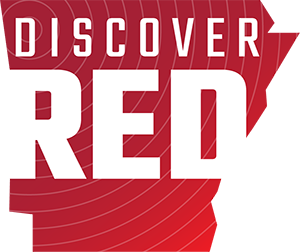“Watch what happens when I do this,” says Malcolm Williamson as he demonstrates a feature of the augmented reality sandbox in the Center for Advanced Spatial Technologies (CAST) at the University of Arkansas.
Malcolm holds his hands a few feet above the sandy surface. A couple of seconds later, the color blue – created by visualization software and an overhead projector – appears on the sand.

Malcolm Williaamson creates “rain” with his hands in the augmented reality sandbox. | Matt Reynolds, University of Arkansas
He’s making it rain.
The sand isn’t actually blue, but neither is it orange, yellow and green – colors that also are cast onto the sand by the software and projector. The sandbox has become a dynamic topogrophic map, which can change instantly by shifting the surface elevation with a hand or a scoop.
Malcolm and CAST colleague Chris Angel built the augmented reality sandbox in Malcolm’s garage. They used equipment that the center had on hand, such as the projector and an adjustable pole. The wood box holds together 200 pounds of sand. The components of the augmented reality sandbox were developed from the UC Davis SARndbx Project Page.
The CAST sandbox is a tool developed to educate users on earth science systems, real-time integration of augmented reality systems and visual graphic effects on simulations. CAST features it in its collaboration with the EAST Initiative, which was founded in Arkansas in 1996 and is built around student-centered project-based learning from the elementary school level through high school.
Malcolm set up the augmented reality sandbox at the annual EAST Initiative conference in Hot Springs last year and it created a buzz. He told me that five schools decided to build a sandbox of their own.
Malcolm said it’s not just K-12 students who can benefit from using the sandbox to test surface elevation.
“This is an interactive demonstration of geospatial technology,” he said. “It could be used by landscape architects if they want to demonstrate water drainage on a particular parcel.”
And it’s a lot of fun.
“It seems to entertain all ages,” he said.






You must be logged in to post a comment.